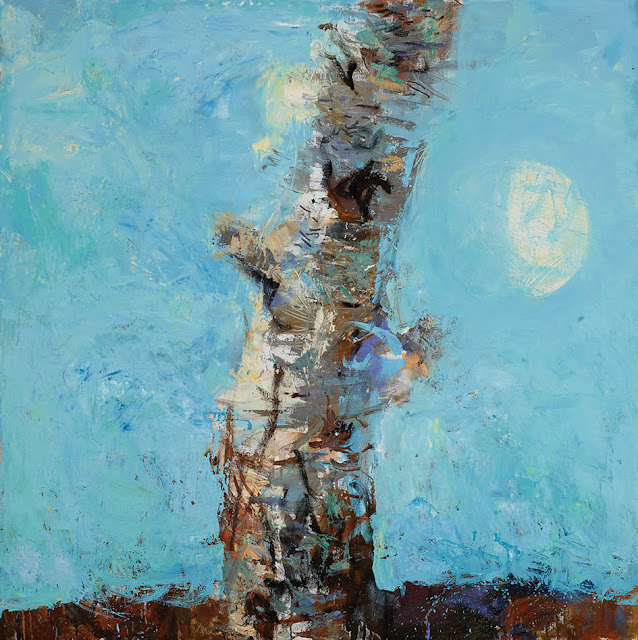Dispatches from remote places
Kilmorack Gallery has been showing the work of ALLAN MACDONALDfor over twenty years. Many thanks to him for this insight into his work.
 |
| Setting up paints. Allan MacDonald in Toridon, Scotland |
The writer Michel Faber once described my work as ‘excited dispatches from remote places’ and there is an element of truth in this. I am drawn to paint in places where the human imprint is small. But where is truly remote? I can get as much a sense of remoteness looking out my back door as I can from driving till the road runs out on the North West coast.
Is there a corner of our world where someone hasn’t been and posted an image on Social Media? Perhaps the moon landings started it all, the ultimate ‘I was there’ images. Where is the last truly remote place? Is it Mars? Is it Heaven?
My continuing attraction to the moon is part of this desire for aloneness. It’s visual, yes, but ultimately spiritual. Not in the Callanish stones manner either. The days of moon worship are past, now we are more likely to worship the person who lands on the moon (a step backwards, one could argue). But our desire for the sacred remains strong. Within this, there must be room for a sense of the Divine. I mean by this a specific sense, not an abstract, subjective perception of the Divine. Can it be found anywhere in contemporary art?
Perhaps the most remote locations now are the inner places within each individual, the exclusive den where the self crouches, beneath the complex strata of life. This is, of course, the very place Divinity looks to dwell, tries to reach.
I recently viewed a film called ‘The Farthest’, recalling the Voyager Satellite mission of 1977. The comments of one scientist intrigued me. He said that what the Voyager mission had taught us was that all along, it wasn’t really ‘why’ we were asking, it was ‘how’. In one sentence, he seemed to diminish an essential aspect of being human. Theologians, philosophers and artists could imagine themselves surplus to requirements. Children ask ‘why’, not ‘how’. Was he implying that we, humanity, had grown up?
Yet it’s possible that the layers of sophistication we cover ourselves in are not helping us grow. Picasso said it took him four years to paint like Raphael but a lifetime to paint like a child. Other artists, from Klee to Miro, drew heavily from childhood art. Philip Otto Runge, the German artist, suggested we should follow Christ’s imperative, to become like little children. Another writer suggested ‘genius is childhood recaptured at will’. How is a great question, but Why engenders the child-like sense of wonder. Perhaps that is what I’m chasing in my paintings, using the remoteness as a catalyst.
One of the joys of painting is the ability to manipulate things. One tree and the moon, a line and a circle, perfect imperfect, near far, finite infinite. A sense of place, if not a sense of time. A mountain massif can become feather light. A solid birch tree transparent. A shapeless snow cloud becomes sculpted
Allan MacDonald
February 2018
 |
| moon morning, Torr Na Cluaineoil on canvas | 100cm x 100cm |
Comments
Post a Comment